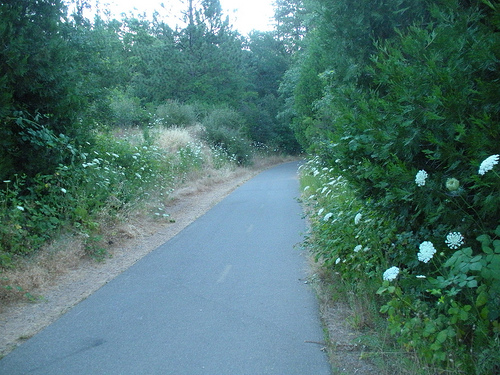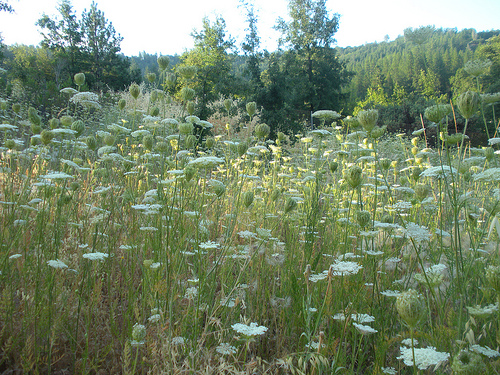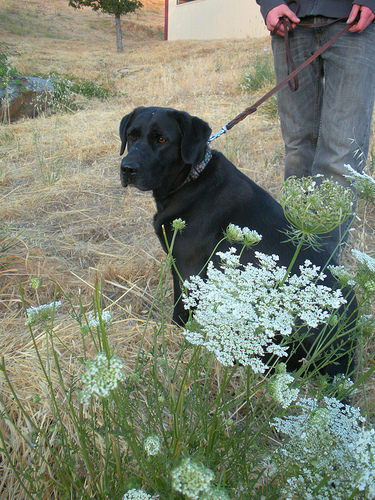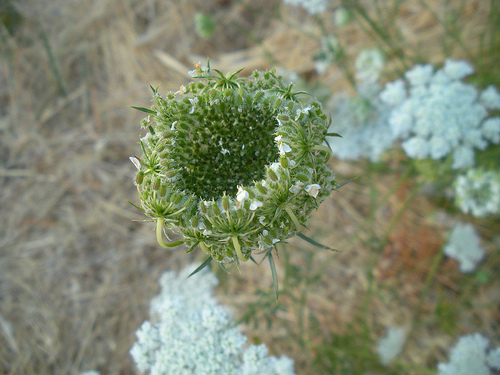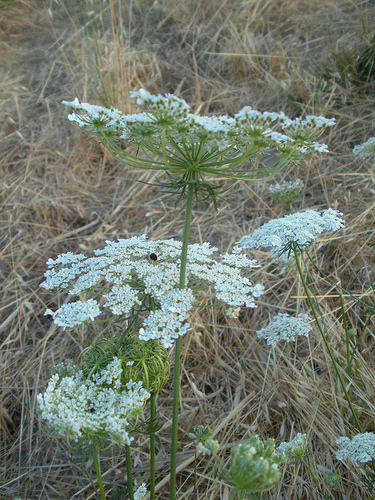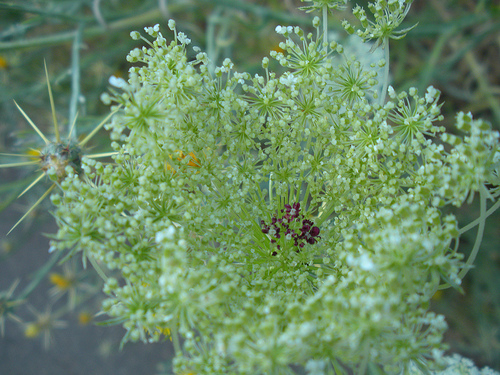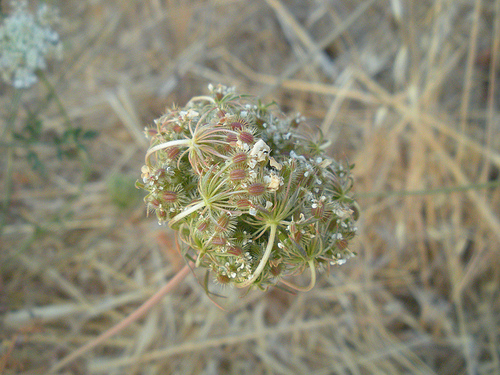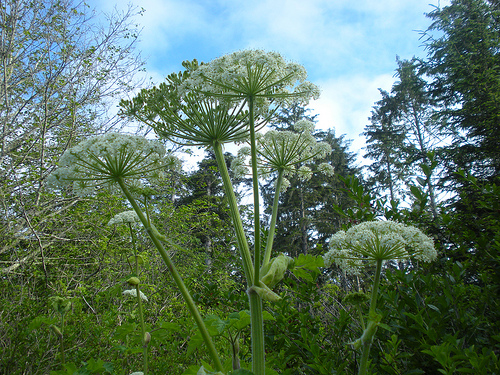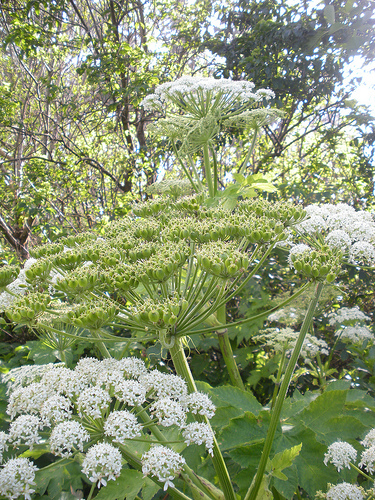This could very easily be called the Summer of Queen Anne’s Lace. Our local area has been blanketed with this wildflower, lining the roads and filling the fields. It is now starting to fade as the weather is very dry and hot….still a few green patches here and there but the stems are shorter and the flower bunches not as large.
Here is a patch we see regularly…this photo was taken back in July.
This is a patch we have just across the street from our house…photo taken last weekend. We were actually on a cricket hunt at sunset but the Queen Anne’s Lace captured our attention. It is still surprisingly green while all the surrounding weeds are brown and crispy. Kona wanted to be in the photo, stickers on her nose from the surrounding weeds.
Here is what the Handbook of Nature Study calls the “fruiting cluster” or “bird’s nest”. Look at all those seeds!
Here is a side shot of the Queen Anne’s Lace and you can see the red dot in the middle very clearly in a few of the flowers.
Here is a close-up showing the red blossoms in the center of this flower. If you look in the background of this photo you can see the star thistles….ugh. Those plants are crazy wicked. We pull them up by the roots if they happen to grow in our yard.
I thought this was such a pretty shape and the seeds almost look pink. This may work its way into my nature journal when I have a few minutes.
The boys have been experts at picking out Queen Anne’s Lace. At first they were mixing it up with Cow Parsnip.
This is what the Cow Parsnip looks like from the side. See how thick the stem is?
Here is the flower cluster. The balls of flowers are different once you recognize it and the leaves are totally different. The size of the plant is much larger than the Queen Anne’s Lace. I have never seen them growing together either so that makes it another identifying feature as well.
So in our attempt to identify and learn about Queen Anne’s Lace, we have learned a lot about the Cow Parsnip as well (also yarrow but that is another post).
I think for our family having a nature study focus has given our adventures a spirit of purpose. We always enjoy getting outside to enjoy our environment. Having a few possible topics in mind as we travel has helped us glean even more from our time outside. It is sort of like seeing an old friend when we come across the particular focus like Queen Anne’s Lace or grasshoppers or bats.
As we wind up our summer studies, I feel the pull of a new set of autumn adventures. I don’t usually like autumn but this year I am ready for it with its cooler days and nights, the fall of the leaves, and the changes. I think nature study has changed me inside and I know it has changed my children.

